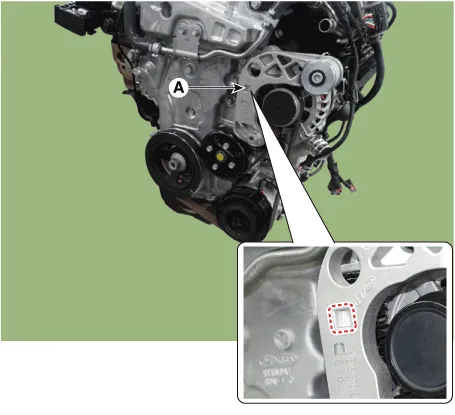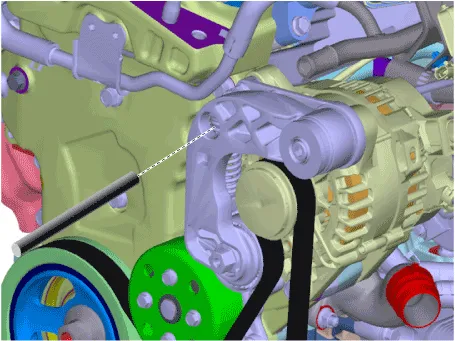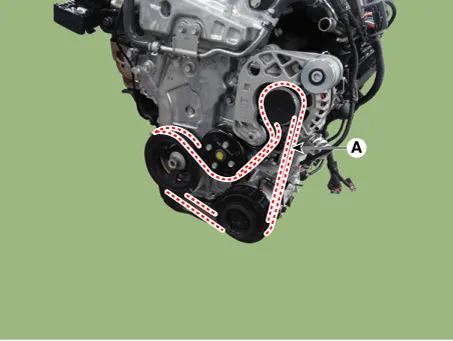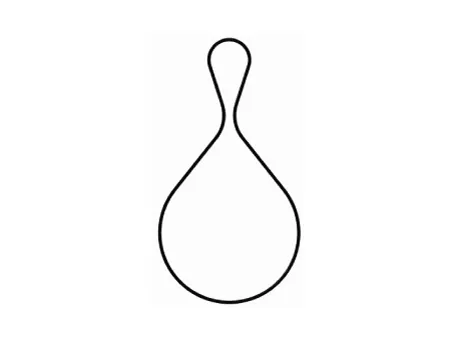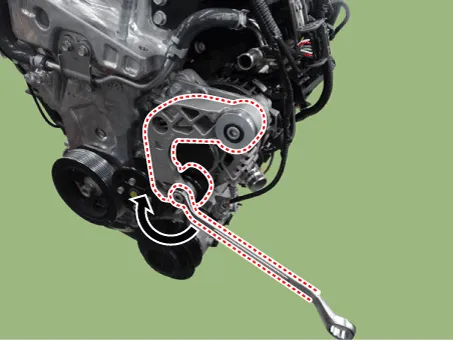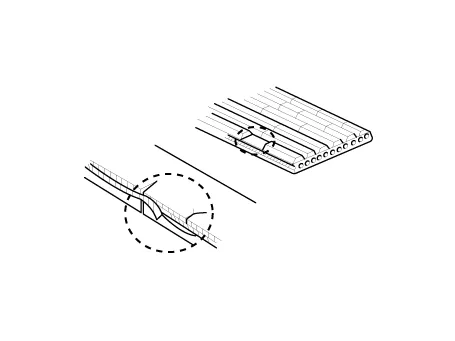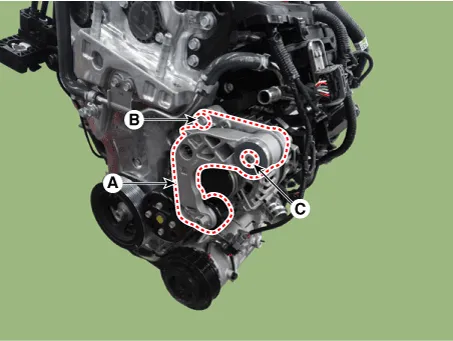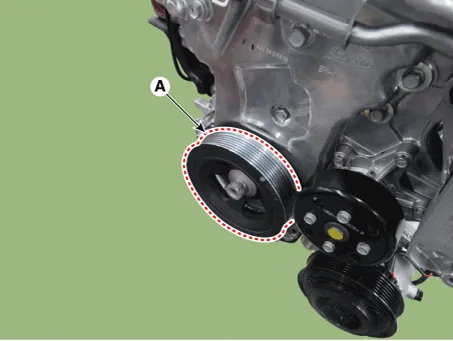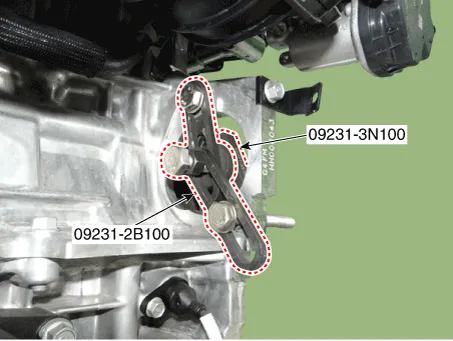Hyundai Elantra (CN7): Engine Mechanical System / Drive Belt System
Hyundai Elantra (CN7) 2021-2026 Service Manual / Engine Mechanical System / Drive Belt System
Drive Belt
Repair procedures
| Removal and Installation |
* There are two methods to when removing the drive belt.
[When removing the drive belt from the top of the vehicle]
| 1. | Install the wrench to the drive belt tensioner repair hole (A) and turn it clockwise.
|
| 2. | Remove the drive belt (A).
|
| 3. | Install in the reverse order of removal.
|
[When removing the drive belt from the bottom of the vehicle]
| 1. | Remove the engine room under cover. (Refer to Engine and Transaxle Assembly - "Engine Room Under Cover") |
| 2. | Turn the spanner to clockwise after installing it to drive belt tensioner arm boss.
|
| 3. | Remove the drive belt (A).
|
| 4. | Install in the reverse order of removal.
|
| Inspection |
Drive Belt Inspection
| 1. | Visually check the belt for excessive wear, frayed cords etc.If any defect has been found, replace the drive belt.
|
Drive Belt Tensioner
Repair procedures
| Removal and Installation |
| 1. | Remove the drive belt. (Refer to Drive Belt System - "Drive Belt") |
| 2. | Remove the drive belt tensioner (A).
|
| 3. | Install in the reverse order of removal.
|
| Inspection |
Check the drive belt tensioner for excessive foreign substances, crack, damage or sticking of pivot shaft. Replace if necessary.
Crankshaft Damper Pulley
Repair procedures
| Removal and Installation |
| 1. | Remove the engine room under cover. (Refer to Engine and Transaxle Assembly - "Engine Room Under Cover") |
| 2. | Remove the drive belt. (Refer to Drive Belt System - "Drive Belt") |
| 3. | Remove the crankshaft damper pulley (A).
|
| 4. | Install in the reverse order of removal. |
| Inspection |
Check the crankshaft damper pulley for vibration in rotation, oil or dust deposit of V-ribbed part. Replace if necessary.
Repair procedures Removal • Use fender covers to avoid damaging painted surfaces.• To avoid damage, unplug the wiring connectors carefully while holding the connector portion.
Other information:
Hyundai Elantra (CN7) 2021-2026 Service Manual: Description and operation
D
Hyundai Elantra (CN7) 2021-2026 Service Manual: Repair procedures
Variant Coding When you need variant coding:– Replace Front View Camera with a new one※ EOL Variant Coding and calibration required for new replacementFront View Camera Variant CodingFront view camera variant coding makes it possible to operate functions for each vehicle type.
Categories
- Manuals Home
- Hyundai Elantra Owners Manual
- Hyundai Elantra Service Manual
- Vehicle Information
- Components and components location
- Driver assistance system
- New on site
- Most important about car
Copyright © 2026 www.helantra7.com - 0.0226

